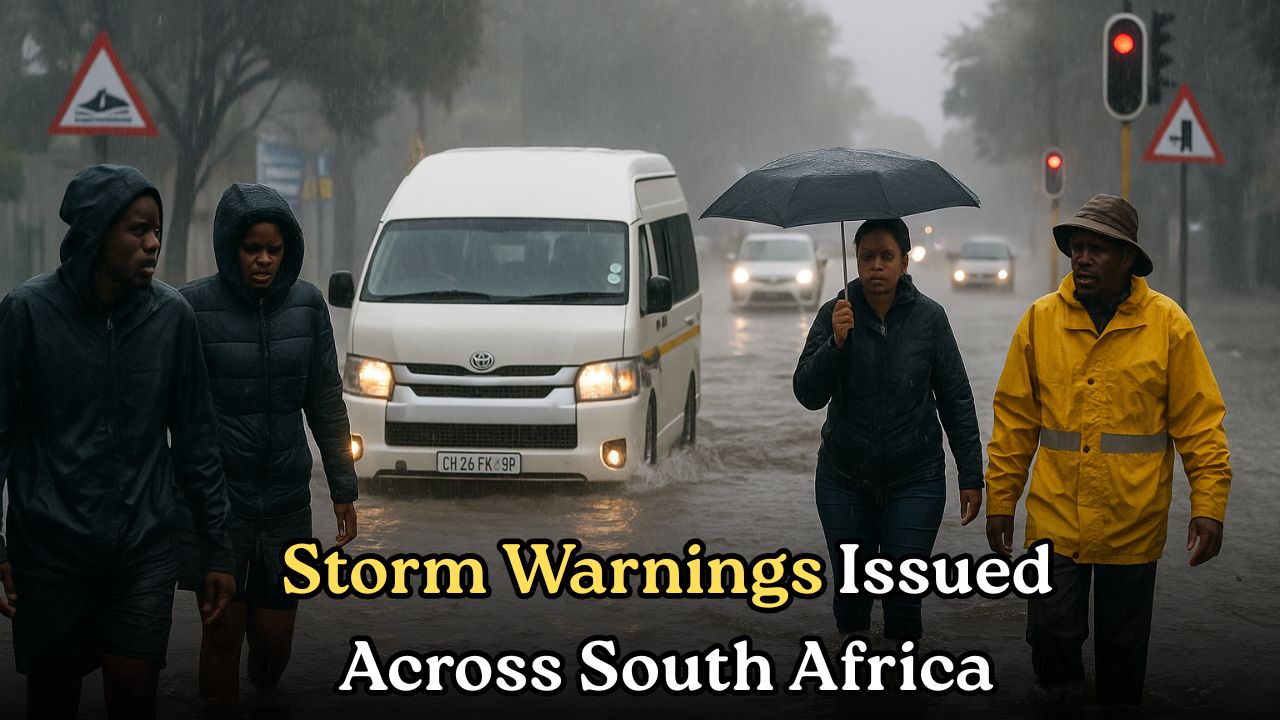
South Africa is currently facing severe weather conditions in September 2025, with meteorological authorities issuing multiple flood warnings, heavy rainfall alerts, and storm advisories across various provinces. Communities in coastal and inland regions are bracing for significant disruptions as strong winds, thunderstorms, and continuous downpours raise the risk of overflowing rivers and flash floods. Emergency services have urged residents to remain vigilant, avoid unnecessary travel, and stay tuned to official weather updates. The ongoing systems are expected to affect transport routes, agricultural activities, and even power supplies, making preparedness crucial. With many areas already saturated from recent rains, the potential for landslides and property damage is high. Government disaster management teams have been deployed to high-risk provinces, and shelters are being prepared for displaced families. As South Africa navigates these challenging weather patterns, both urban and rural communities are being reminded of the importance of safety, readiness, and community support to mitigate the impact of these adverse events.
Heavy Rainfall and Flood Risks in Key Provinces
Several provinces, including KwaZulu-Natal, Eastern Cape, and Gauteng, are reporting torrential rainfall leading to dangerous water levels in rivers and dams. The South African Weather Service has placed parts of these provinces on high alert, with residents in low-lying areas most at risk. Flood-prone regions near rivers and informal settlements are particularly vulnerable, as drainage systems struggle to cope with the volume of water. Local authorities have warned of possible road closures, public transport delays, and property flooding. Emergency teams are actively monitoring dam levels and coordinating with municipalities to ensure early warnings are communicated effectively. Communities in rural areas face unique challenges due to limited infrastructure, making evacuation and rescue operations more complex. Residents are urged to move livestock to higher ground, secure property, and prepare essential supplies in anticipation of prolonged weather disruptions. With forecasts predicting continuous rain through the month, proactive steps are vital to reduce losses and protect lives.
Storm Alerts and High Wind Dangers
Beyond the heavy rains, storm alerts have been issued across multiple provinces, with strong winds causing widespread concerns. Coastal regions in the Western Cape and Eastern Cape are expected to experience gale-force winds that could damage homes, uproot trees, and disrupt fishing operations. Inland areas, particularly in Free State and North West, are also expected to face intense thunderstorms, with risks of lightning strikes and power outages. The potential for hailstorms adds another layer of threat to farmers already struggling with excessive rainfall. Authorities have cautioned motorists to drive carefully as reduced visibility, slippery roads, and falling debris make travel extremely hazardous. Airports and seaports are preparing for possible disruptions in flights and shipping routes. Power utility companies have increased monitoring to handle potential outages caused by fallen power lines. With schools and workplaces potentially affected, disaster readiness is being emphasized to ensure minimal disruption to daily life during these extreme storm events.
Government and Community Response to the Crisis
Government agencies, provincial disaster management teams, and community organizations have activated emergency protocols to respond swiftly to the unfolding weather crisis. Shelters are being set up for displaced individuals, while food and medical supplies are being transported to vulnerable regions. The military has been placed on standby to assist with rescue missions in areas cut off by floods. Community radio stations and social media platforms are being used extensively to spread real-time weather updates and safety advisories. Farmers and small business owners are being offered temporary relief packages to cope with the damages expected from these storms. Non-profit organizations are also stepping in to provide immediate aid, particularly in rural areas where resources are scarce. The government has stressed the importance of cooperation between citizens and authorities, urging communities to check on vulnerable neighbors, share resources, and remain alert. This unified response highlights the nation’s resilience and determination to withstand nature’s challenges.
Preparing for the Weeks Ahead
Meteorologists warn that September 2025 may continue to bring unpredictable weather patterns as global climate changes intensify. South Africa’s diverse landscape means each province faces unique challenges, from coastal flooding to inland storms. Long-term preparation is becoming increasingly necessary, with authorities stressing investment in infrastructure such as stronger drainage systems, reinforced housing, and early warning technologies. Schools and businesses are being encouraged to adopt contingency plans for remote learning and work during periods of severe disruption. Citizens are advised to prepare emergency kits containing essentials like clean water, non-perishable food, medicines, and power backups. Farmers are urged to monitor weather reports closely and adapt agricultural practices to minimize losses. The crisis serves as a reminder that climate resilience is not only a government responsibility but also a community effort. By remaining informed, cooperative, and proactive, South Africans can reduce the risks posed by extreme weather and safeguard their future.






